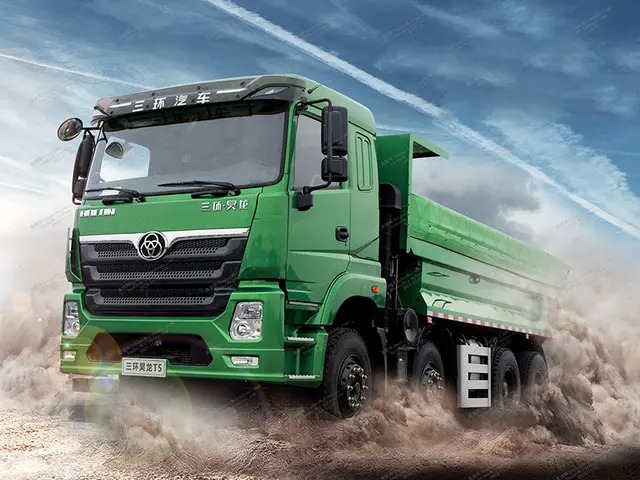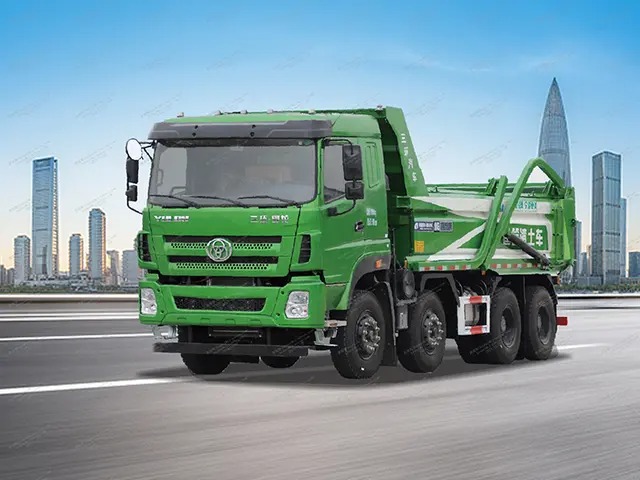


Features And Uses of Commercial Vs Non-Commercial Vehicles
Views: 192 Author: Site Editor Publish Time: 2025-09-12 Origin: Site









Introduction
When discussing commercial vs non-commercial vehicles, the focus often goes beyond just what they look like or how they operate. At its core, this comparison is about purpose, function, and the role each type of vehicle plays in everyday life and business operations. Commercial vehicles are designed for transporting goods, materials, or passengers as part of a business, while non-commercial vehicles are intended for personal or family use. Understanding the differences in features, legal classifications, and uses of these two categories is essential for buyers, fleet managers, and even individual car owners. This article explores the defining features and primary applications of both commercial and non-commercial vehicles, giving you clear insights into when and why each type is most suitable.
Key Distinctions Between Commercial and Non-Commercial Vehicles
The primary difference between a commercial vs non-commercial vehicle lies in their intended use. A commercial vehicle is generally used for transporting goods, paying passengers, or equipment for profit. Non-commercial vehicles, on the other hand, are used for personal transport without the intent of generating revenue.
Commercial vehicle examples: Trucks, vans, buses, taxis, delivery vans.
Non-commercial vehicle examples: Sedans, SUVs, motorcycles, private minivans.
Another key distinction is in legal classification. Governments typically require additional licensing, registration, and insurance coverage for commercial vehicles because they involve higher risks and responsibilities. Non-commercial vehicles usually have simpler registration requirements and fewer restrictions.
Features of Commercial Vehicles
Commercial vehicles come with distinct design and regulatory features tailored for business use. Some of their notable features include:
Capacity and Size: Built to handle heavy loads, large cargo, or multiple passengers.
Durability: Reinforced chassis and stronger suspension for frequent and long-distance travel.
Regulatory Compliance: Equipped with safety devices like tachographs, GPS tracking, and speed limiters in certain regions.
Fuel Efficiency Considerations: Though often larger, commercial vehicles may include optimized engines to reduce operating costs.
Insurance Requirements: Policies cover not just the vehicle but also the goods and passengers.
These features make commercial vehicles a backbone of industries like logistics, transportation, construction, and delivery services.

Features of Non-Commercial Vehicles
Non-commercial vehicles prioritize comfort, convenience, and personal utility rather than heavy-duty performance. Their features often include:
Passenger Comfort: Enhanced seating, entertainment systems, and climate control.
Design and Aesthetics: Sleeker styles, diverse models, and consumer-focused finishes.
Efficiency: Smaller engines designed for fuel economy in personal use scenarios.
Lower Maintenance Costs: Generally simpler and less expensive to repair compared to heavy-duty commercial counterparts.
Insurance Coverage: Focused mainly on driver and passenger protection.
These features make non-commercial vehicles better suited for personal commutes, family trips, and leisure driving.
Comparative Analysis: Commercial vs Non-Commercial Vehicles
To understand the functional differences more clearly, let’s compare commercial vs non-commercial vehicles side by side.
| Aspect | Commercial Vehicle | Non-Commercial Vehicle |
|---|---|---|
| Primary Purpose | Business use – goods, services, passengers | Personal or family use |
| Size & Build | Larger, reinforced, heavy-duty | Compact to mid-size, comfort-focused |
| Regulations | Strict licensing, inspections, higher taxes | Basic registration and insurance |
| Fuel Efficiency | Optimized for load-bearing, less mileage | Optimized for commuting, higher MPG |
| Insurance | Covers vehicle, goods, and third-party risks | Covers driver and passengers |
This table highlights that commercial vehicles are engineered for profitability and productivity, while non-commercial vehicles cater to convenience and lifestyle needs.
Uses of Commercial Vehicles
The uses of commercial vehicles extend across multiple industries:
Logistics and Freight: Trucks and vans transport raw materials and finished goods across cities and countries.
Public Transportation: Buses, shuttles, and taxis ensure mass mobility.
Construction: Heavy-duty trucks and utility vans carry equipment, tools, and supplies.
Service Industries: Food trucks, delivery vans, and repair service vehicles act as mobile business hubs.
Specialized Sectors: Ambulances, fire trucks, and postal vehicles provide critical services.
Each of these uses demonstrates how commercial vehicles directly fuel economic activity and support daily business operations.
Uses of Non-Commercial Vehicles
Non-commercial vehicles, while less industrial in purpose, play an equally crucial role in modern life:
Personal Transportation: Cars, motorcycles, and SUVs simplify commutes.
Family Needs: Minivans and SUVs provide comfort and safety for family trips.
Leisure and Travel: Recreational vehicles (RVs) and private cars enhance travel experiences.
Small Business Overlap: Some personal vehicles may double as business transport, though they are not officially classified as commercial.
These uses highlight the everyday importance of non-commercial vehicles in enhancing individual mobility, flexibility, and lifestyle quality.
Cost and Ownership Considerations
When deciding between a commercial vs non-commercial vehicle, ownership costs are critical:
Upfront Costs: Commercial vehicles often cost more due to larger builds and specialized equipment.
Insurance Premiums: Higher for commercial vehicles because of liability risks.
Maintenance: Heavy use increases wear-and-tear, making commercial vehicle upkeep costlier.
Resale Value: Commercial vehicles may depreciate faster due to intense usage, while non-commercial vehicles maintain resale appeal if well-maintained.
| Factor | Commercial Vehicle | Non-Commercial Vehicle |
|---|---|---|
| Purchase Price | Higher | Moderate to lower |
| Insurance | Expensive, broad coverage | Affordable, limited scope |
| Maintenance | Frequent, specialized | Occasional, lower cost |
| Resale Value | Faster depreciation | Slower depreciation |
These financial considerations can heavily influence whether an individual or business should choose commercial or non-commercial vehicles.

Regulatory and Legal Differences
The commercial vs non-commercial vehicle divide is also shaped by strict laws and compliance rules:
Licensing: Commercial drivers may need special licenses (e.g., CDL in the US).
Taxes and Fees: Heavier tax burdens for commercial vehicles due to road usage and weight.
Safety Standards: Commercial vehicles face regular inspections for safety compliance.
Operational Restrictions: Weight limits, restricted zones, and mandatory permits for specific routes.
For non-commercial vehicles, the legal requirements are generally simpler—basic driver’s licenses, periodic inspections, and standard registration.
Choosing the Right Vehicle: Practical Guidelines
When deciding between commercial vs non-commercial vehicles, consider:
Purpose: Will the vehicle primarily serve a business or personal need?
Budget: Can you handle higher commercial insurance and maintenance costs?
Regulations: Are you willing to meet compliance requirements for commercial operations?
Long-Term Use: Is your need occasional or continuous?
For businesses, investing in commercial vehicles enhances efficiency and compliance. For individuals, non-commercial vehicles strike a better balance between affordability and convenience.
FAQs
What defines a vehicle as commercial?
A vehicle is classified as commercial if it is used for transporting goods, passengers, or equipment for profit or business purposes.
2. Can a personal car be used for business?
Yes, but if it is primarily used for business, it may be reclassified as a commercial vehicle for insurance and tax purposes.
3. Are commercial vehicles more expensive to insure?
Yes, due to higher risks and liability coverage, commercial vehicle insurance is typically costlier than non-commercial policies.
4. Do commercial vehicles require special licenses?
In many regions, yes. For example, truck drivers may need a Commercial Driver’s License (CDL).
5. Which is better for long-term ownership: commercial or non-commercial?
It depends on the purpose. For business operations, commercial vehicles provide long-term value. For personal use, non-commercial vehicles offer affordability and convenience.






